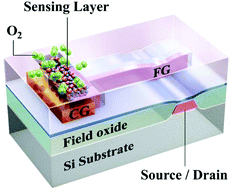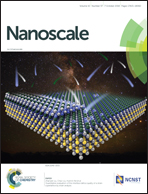Observation of physisorption in a high-performance FET-type oxygen gas sensor operating at room temperature†
Abstract
Oxygen (O2) sensors are needed for monitoring environment and human health. O2 sensing at low temperature is required, but studies are lacking. Here we report, for the first time, that the performance of a field effect transistor (FET)-type O2 sensor operating at 25 °C was improved greatly by a physisorption sensing mechanism. The sensing material was platinum-doped indium oxide (Pt–In2O3) nanoparticles formed by an inkjet printer. The FET-type sensor showed excellent repeatability under a physisorption mechanism and showed much better sensing performance than a resistor-type sensor fabricated on the same wafer at 25 °C. The sensitivity of the sensor increased with increasing Pt concentration up to ∼10% and decreased with further increasing Pt concentration. When the sensing temperature reached 140 °C, the sensing mechanism of the sensor changed from physisorption to chemisorption. Interestingly, the pulse pre-bias before the read bias affected chemisorption but had no effect on physisorption.



 Please wait while we load your content...
Please wait while we load your content...